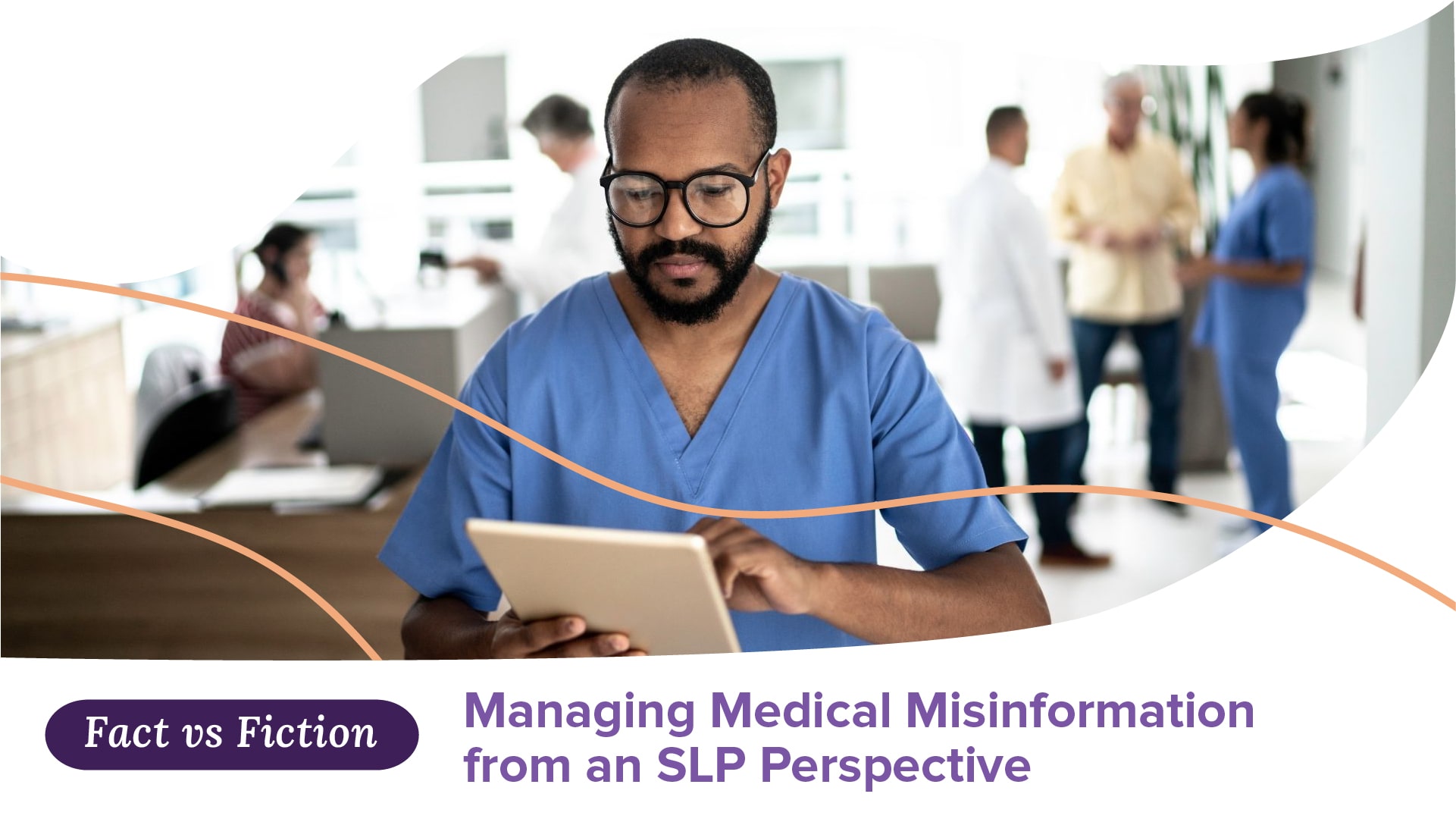In an information-abundant world, it can be difficult to distinguish fact from fiction.
Misinformation is data that is inadvertently false and shared without intent to cause harm (Wang et al., 2019). More specifically, health misinformation can be defined as a claim contrary to the consensus of the scientific community, which allows for what is accepted as true to evolve as science advances (Swire-Thompson & Lazer, 2020). When misinformation about health and medical topics spreads rapidly and at scale, the consequences can be dire. These can include, but are not limited to, delayed care, financial exploitation and medical injuries (Finn 2019).
Because public trust in direct healthcare professionals remains high, it can be particularly consequential when these individuals spread misinformation (Swire-Thompson & Lazer, 2020). As speech-language pathologists, we can turn to the ASHA Code of Ethics for guidance on our role in the context of misinformation. For example, Principles of Ethics III states “Individuals shall honor their responsibility to the public when advocating for the unmet communication and swallowing needs of the public and shall provide accurate information involving any aspect of the professions.” Additionally, we can continue to utilize the best available information gathered from the scientific literature in accordance with the principles of evidence-based practice.
As individuals increasingly seek health and medical related answers online, misinformation can spread further and faster. The algorithmic design of search engines and social media varies search results from user to user and mixes mundane, sensationalized and critical medical information into a single feed (Donovan 2020). A 2018 study by Deshpande, Deshpande and O’Brien analyzed the portrayal of tinnitus-related information across Facebook, Twitter and Youtube over the span of a month. The authors documented significant amounts of misinformation about tinnitus across the platforms and advised audiologists to be prepared to direct patients to valid sources of information.
In 2020 at the start of the COVID-19 pandemic, the WHO declared a parallel “infodemic.” There is no quick fix to the medical misinformation mess and how to address it through clinician intervention (Southwell et al., 2019). Unfortunately, simply presenting facts may not be effective (Donovan 2020). In some circumstances, repeating a piece of misinformation with forceful pushback can in turn reinforce it. Instead, healthcare professionals may be mindful of patients’ prior medical experiences, take opportunities to actively listen and initiate conversations regarding what patients already know about their condition (Southwell et al., 2019).
Our team produced a self-study on the subject, and it’s available for you to work through online. Check out Managing Misinformation from an SLP Perspective to learn more on how to respond to inaccurate data when you encounter it in the workplace.
References:
American Speech-Language-Hearing Association. (n.d.). Evidence-Based Practice (EBP). Retrieved June 13, 2021, from https://www.asha.org/research/ebp/
American Speech-Language-Hearing Association. (2016, March 1). Code of Ethics. https://www.asha.org/code-of-ethics/
Deshpande, A. K., Deshpande, S. B., & O’Brien, C. (2018). A Study of Social Media Utilization by Individuals With Tinnitus. American Journal of Audiology, 27(4), 559–569. https://pubs.asha.org/doi/10.1044/2018_AJA-18-0033
Donovan, J. (2020). Concrete Recommendations for Cutting Through Misinformation During the COVID-19 Pandemic. American Journal of Public Health, 110(S3), S286–S287. https://ajph.aphapublications.org/doi/full/10.2105/AJPH.2020.305922
Finn, P. (2019). The Impact of Social Media on Communication Sciences and Disorders: A Need for Examination and Research. Perspectives of the ASHA Special Interest Groups, 4(2), 224–227. https://pubs.asha.org/doi/10.1044/2019_PERS-ST-2019-0001
Southwell, B. G., Niederdeppe, J., Cappella, J. N., Gaysynsky, A., Kelley, D. E., Oh, A., Peterson, E. B., & Chou, W. Y. S. (2019). Misinformation as a Misunderstood Challenge to Public Health. American Journal of Preventive Medicine, 57(2), 282–285. https://doi.org/10.1016/j.amepre.2019.03.009
Swire-Thompson, B., & Lazer, D. (2020). Public Health and Online Misinformation: Challenges and Recommendations. Annual Review of Public Health, 41(1), 433–451. https://www.annualreviews.org/doi/10.1146/annurev-publhealth-040119-094127
Wang, Y., McKee, M., Torbica, A., & Stuckler, D. (2019). Systematic Literature Review on the Spread of Health-related Misinformation on Social Media. Social Science & Medicine, 240, 112552. https://www.sciencedirect.com/science/article/pii/S0277953619305465?via%3Dihub

